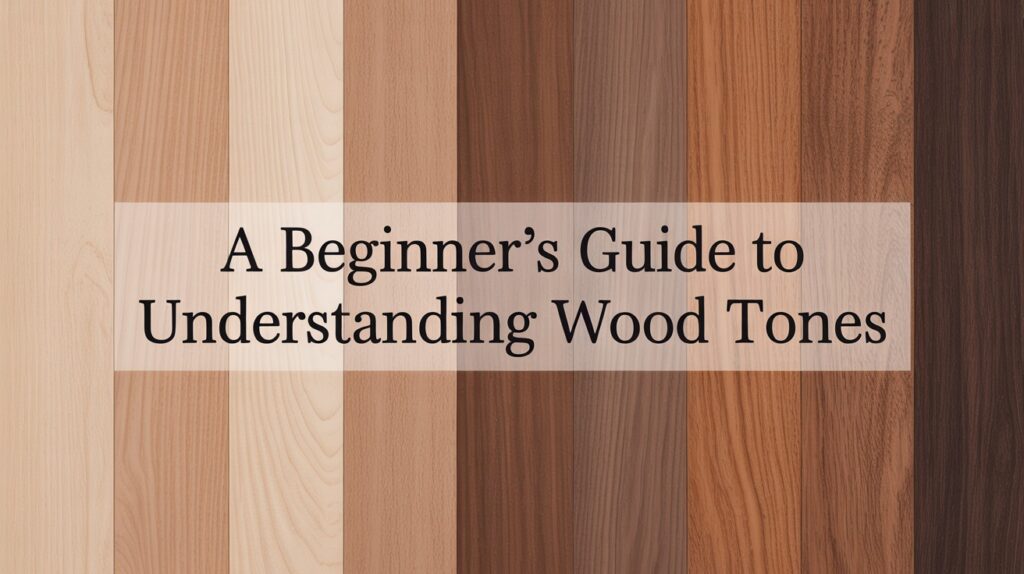Understanding wood tones plays a crucial role in creating cohesive, beautiful spaces throughout your home.
The right wood choices can make furniture pieces work harmoniously together, while poor selections can leave rooms feeling disjointed and unfinished.
Many beginners face the common dilemma of not knowing how to mix, match, or choose wood tones when decorating their homes or selecting new furniture pieces.
This comprehensive guide breaks down the fundamental concepts you need to master wood tone basics.
We’ll cover essential elements including tone variations, undertones that affect color appearance, grain patterns that influence texture and visual weight, and practical strategies for combining different wood species successfully.
By understanding these core principles, you’ll gain the confidence to make informed decisions about wood selections that complement your existing decor and personal style preferences.
What Are Wood Tones?
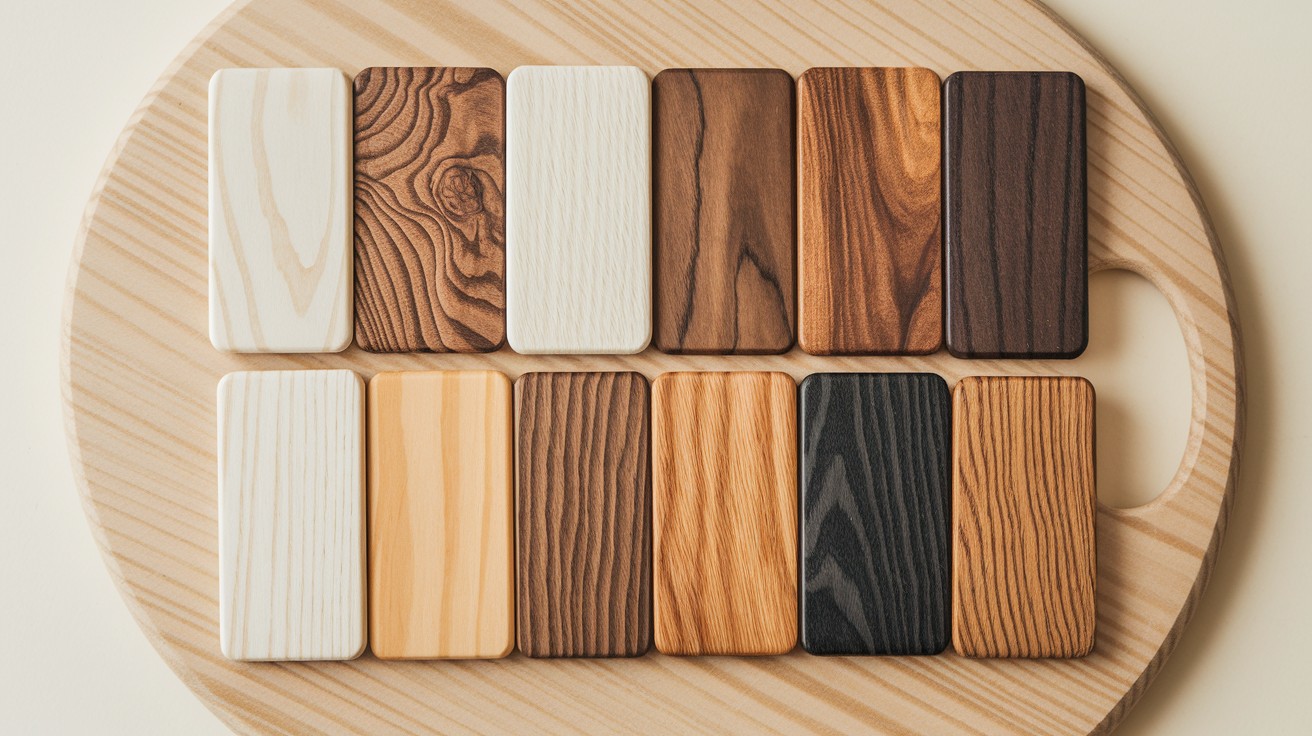
Basic explanation of wood tone concepts including the difference between tone, color, natural wood, and stained finishes.
The Difference Between Tone and Color
Understanding the distinction between tone and color is fundamental to working with wood successfully.
Tone refers to the overall lightness or darkness of a wood piece, ranging from very light shades that appear almost white to deep, dark varieties that approach black.
Color, on the other hand, represents the actual shade characteristics inherent to specific wood species-such as the golden hues of oak or the rich chocolate browns of walnut.
This separation matters because two different wood species can share similar tones while having completely different colors.
For example, bleached oak and natural maple might both fall into the light tone category, but oak displays warmer yellow undertones while maple tends toward cooler, more neutral coloring.
Natural vs Stained Wood
Natural wood showcases the authentic colors that occur in each species without any chemical alteration.
These unstained woods display their true character, from the pale cream of birch to the deep reddish-brown of cherry.
Each species has its own unique color signature that develops naturally as the tree grows.
Stained wood involves applying chemical treatments that alter or deepen the original tone and color.
Stains can dramatically transform a wood’s appearance-turning light pine into something resembling dark walnut, or enhancing cherry’s natural red tones to create richer, more vibrant surfaces.
Types of Natural Wood Tones
1. Maple
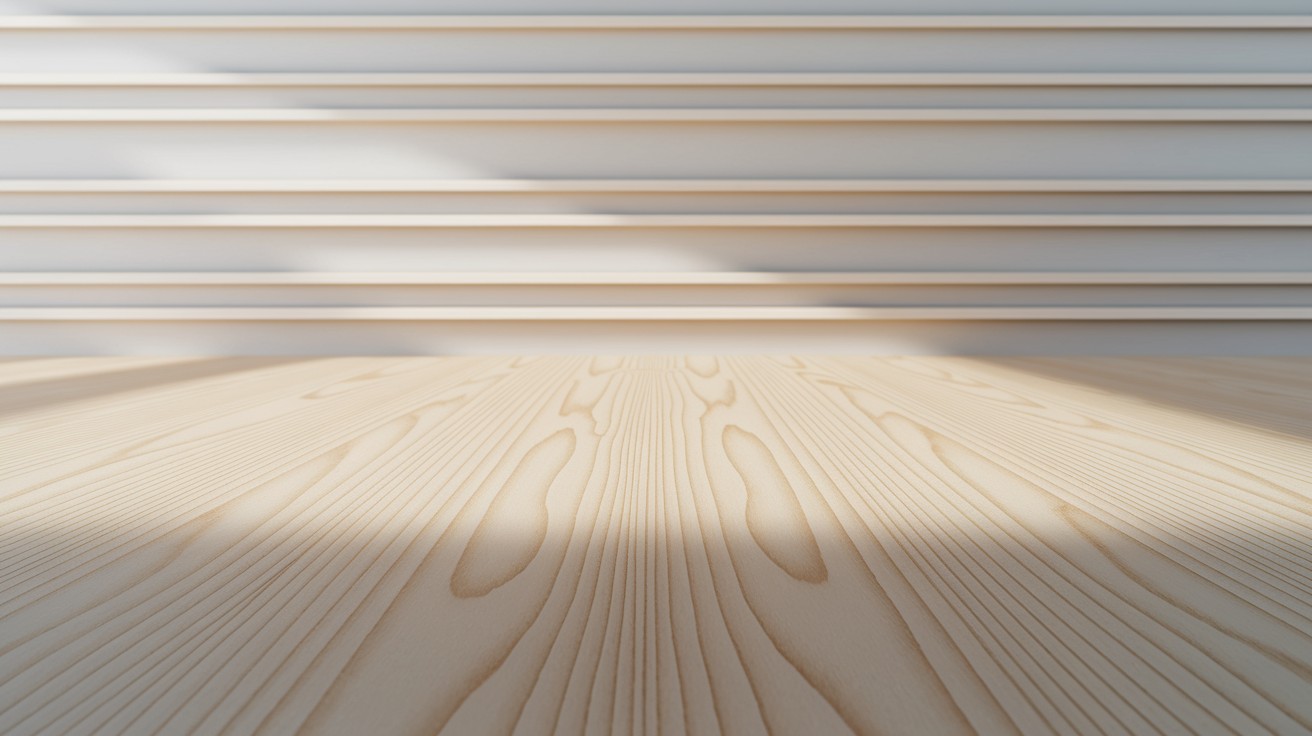
Clean, neutral appearance with subtle grain patterns that complement various decor styles. Perfect for modern or minimalist designs where you want wood warmth without overwhelming the space.
2. Birch
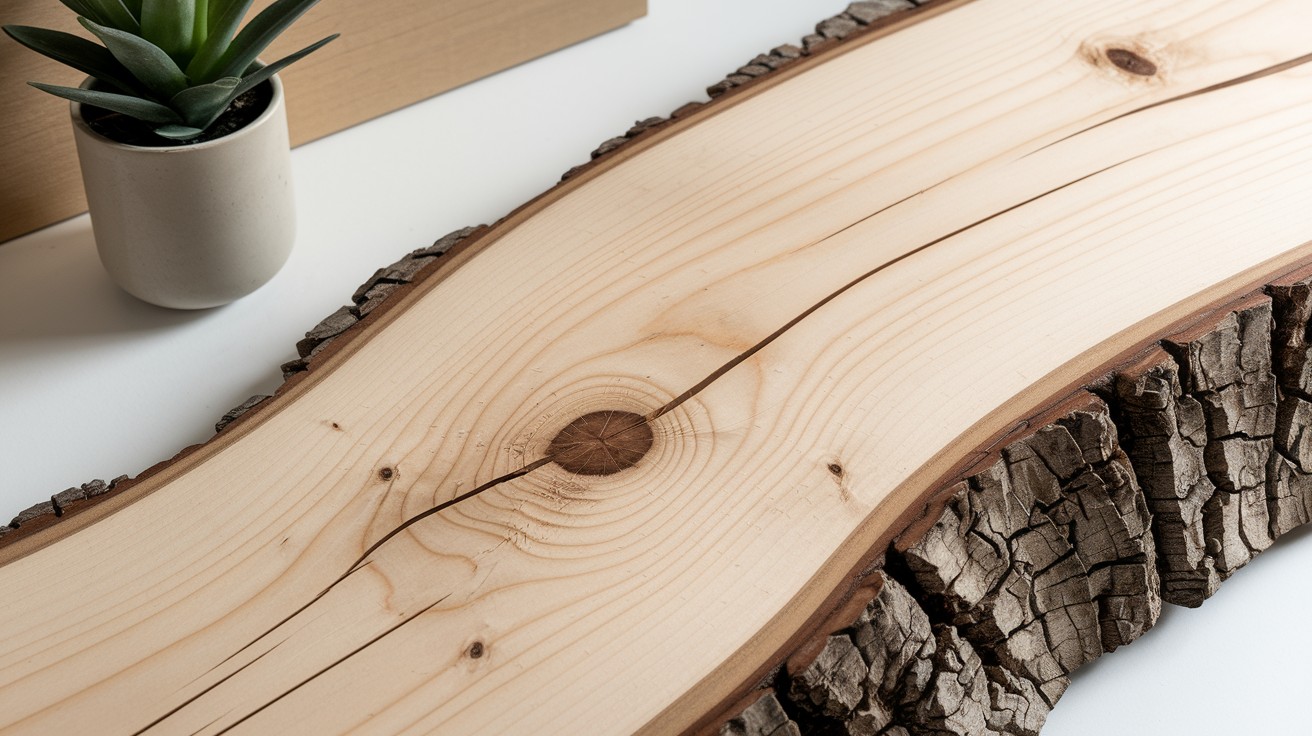
Smooth, even coloring with fine grain that accepts stains beautifully if you later decide to change the tone. Offers flexibility for future design changes while maintaining natural beauty.
3. Pine
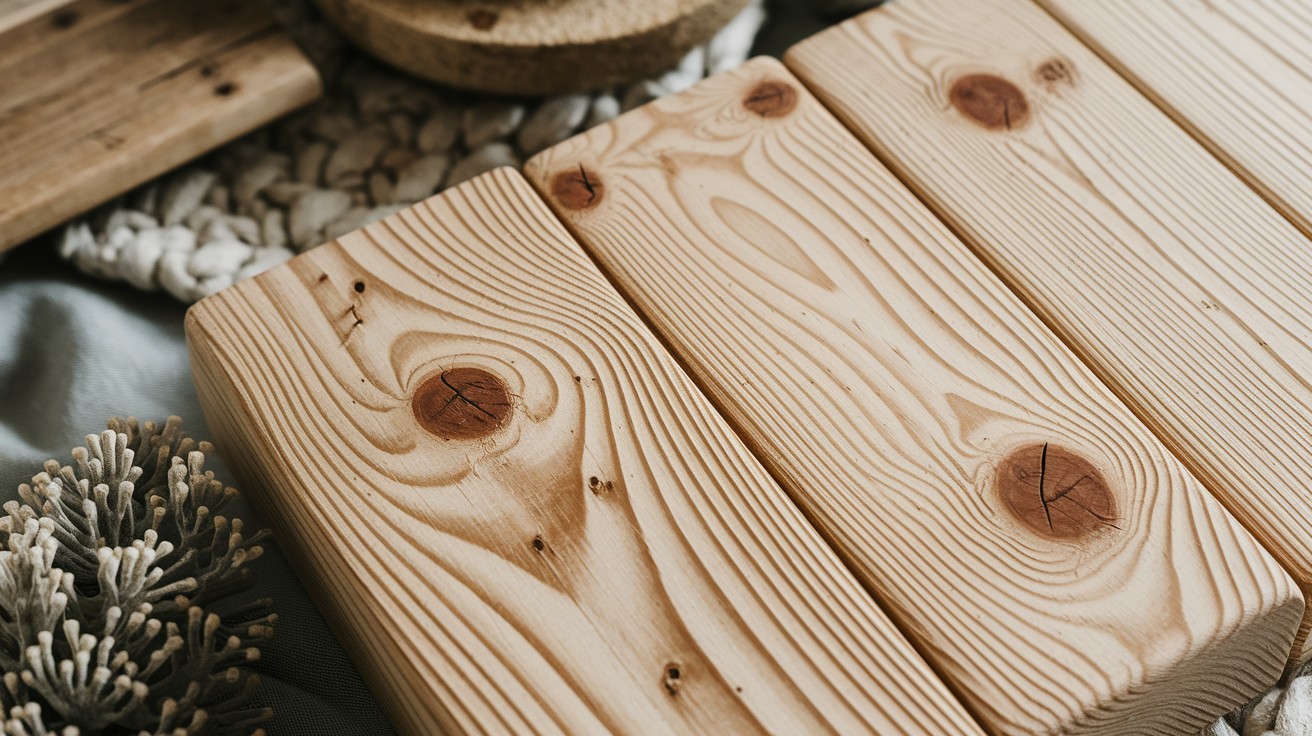
Features a warm, creamy base with visible knots and grain variations that add rustic character to casual settings. Ideal for farmhouse or cottage-style interiors.
4. Oak
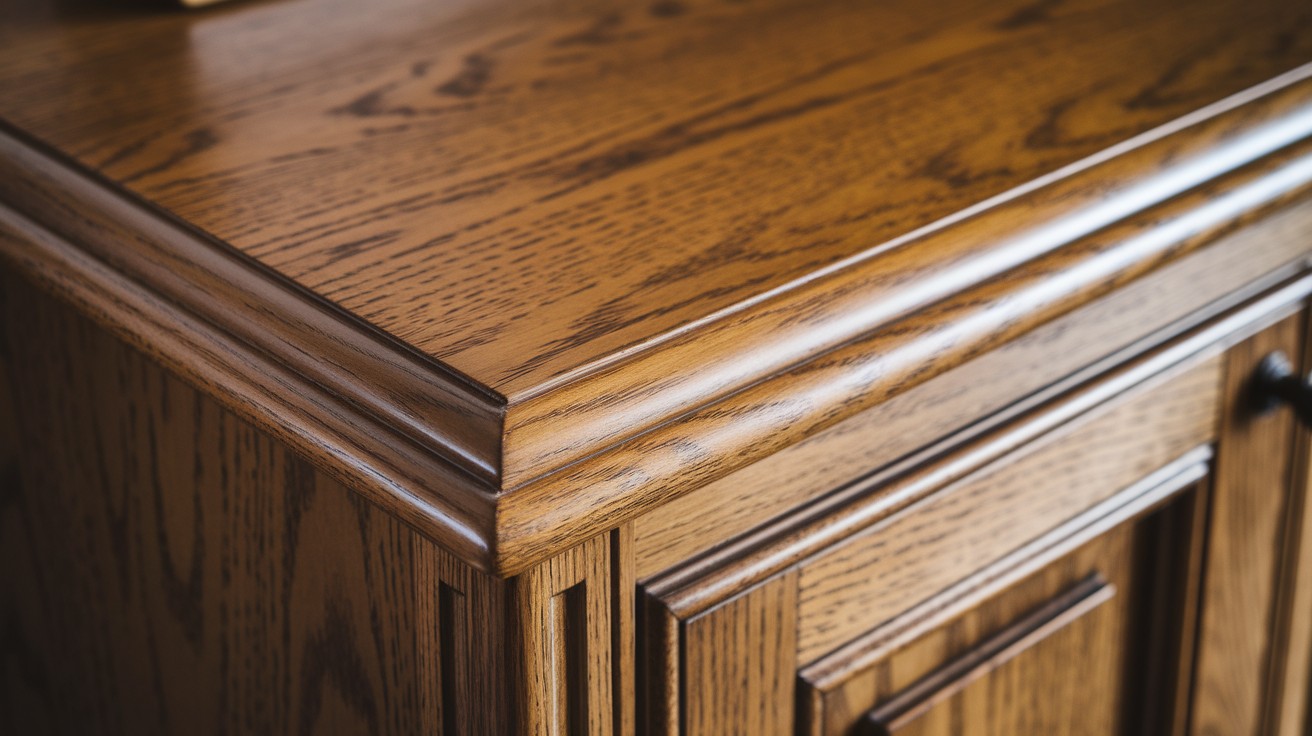
Displays prominent grain patterns with golden undertones that have made it a classic choice for traditional furniture. Serves as a versatile middle ground balancing warmth with sophistication.
5. Cherry
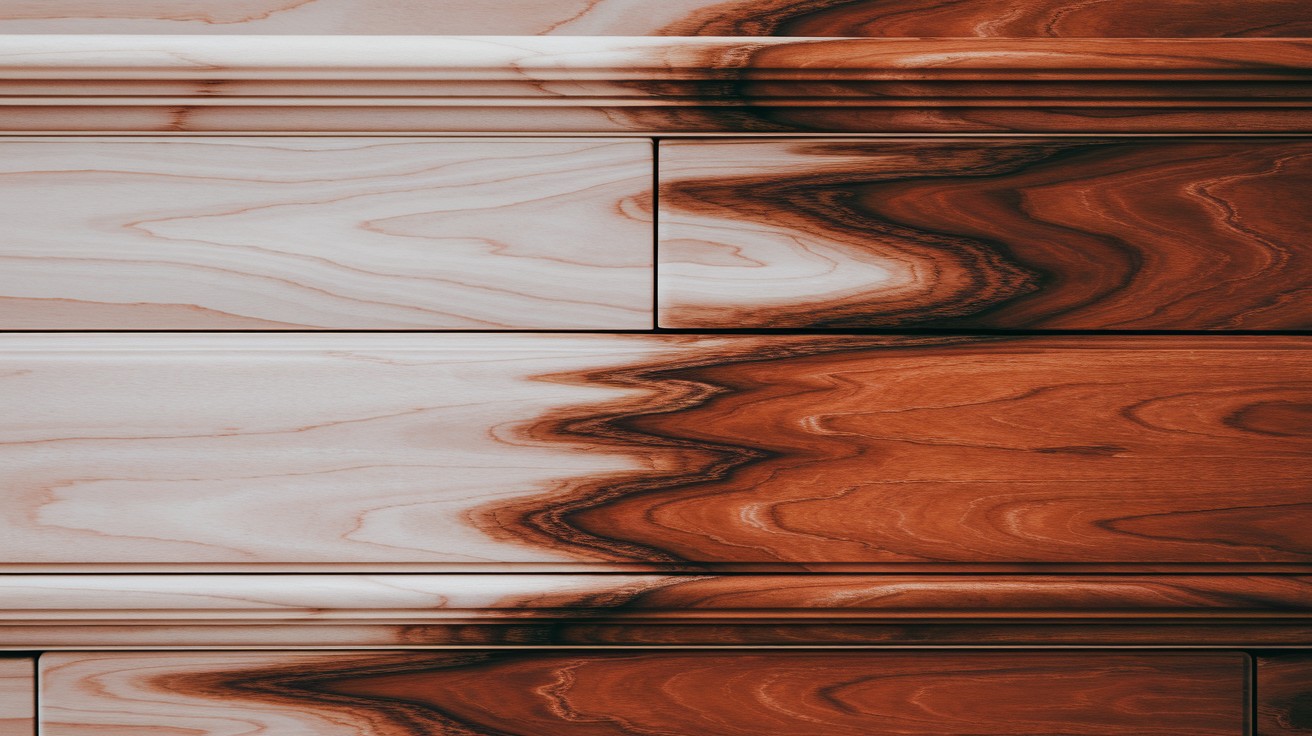
Starts with a light pinkish hue that naturally darkens to rich reddish-brown over time when exposed to light. Creates beautiful aging characters that improves with years.
6. Cedar
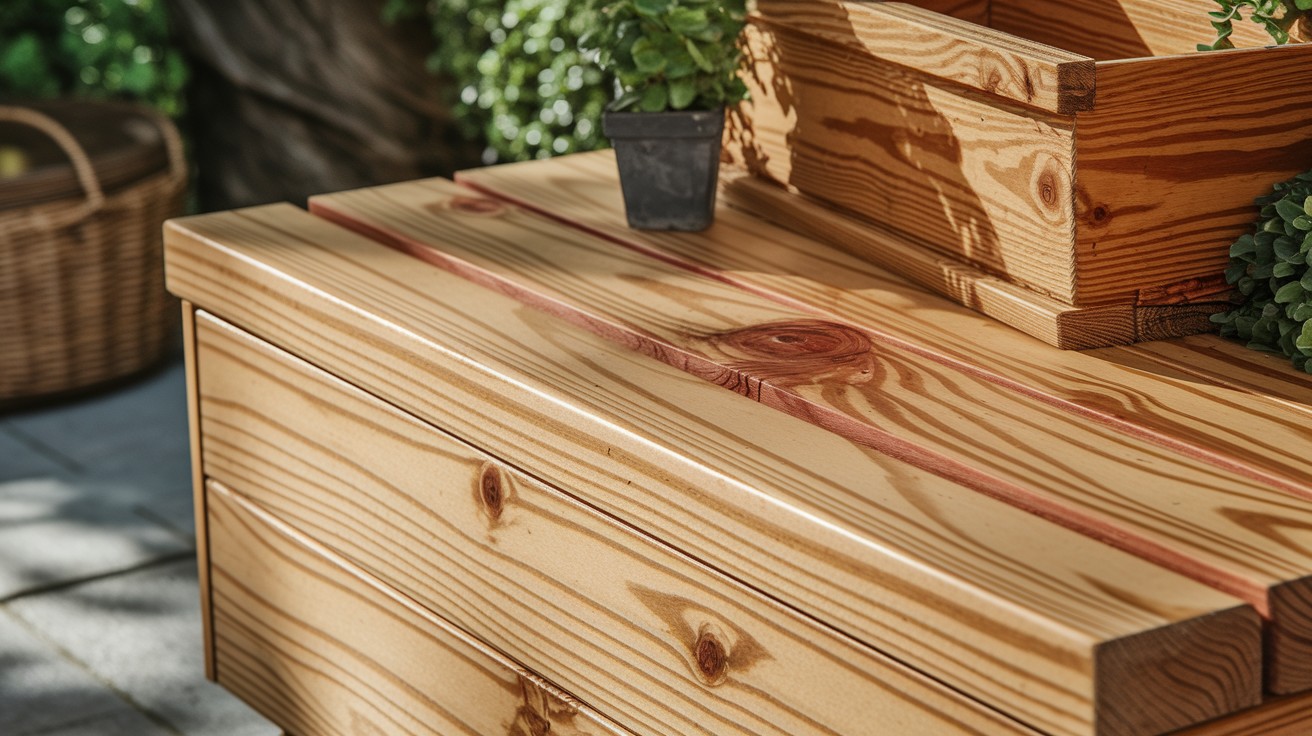
Brings warm, honey-colored tones with natural oils that provide resistance to insects and moisture. Perfect for outdoor furniture or storage pieces.
7. Walnut
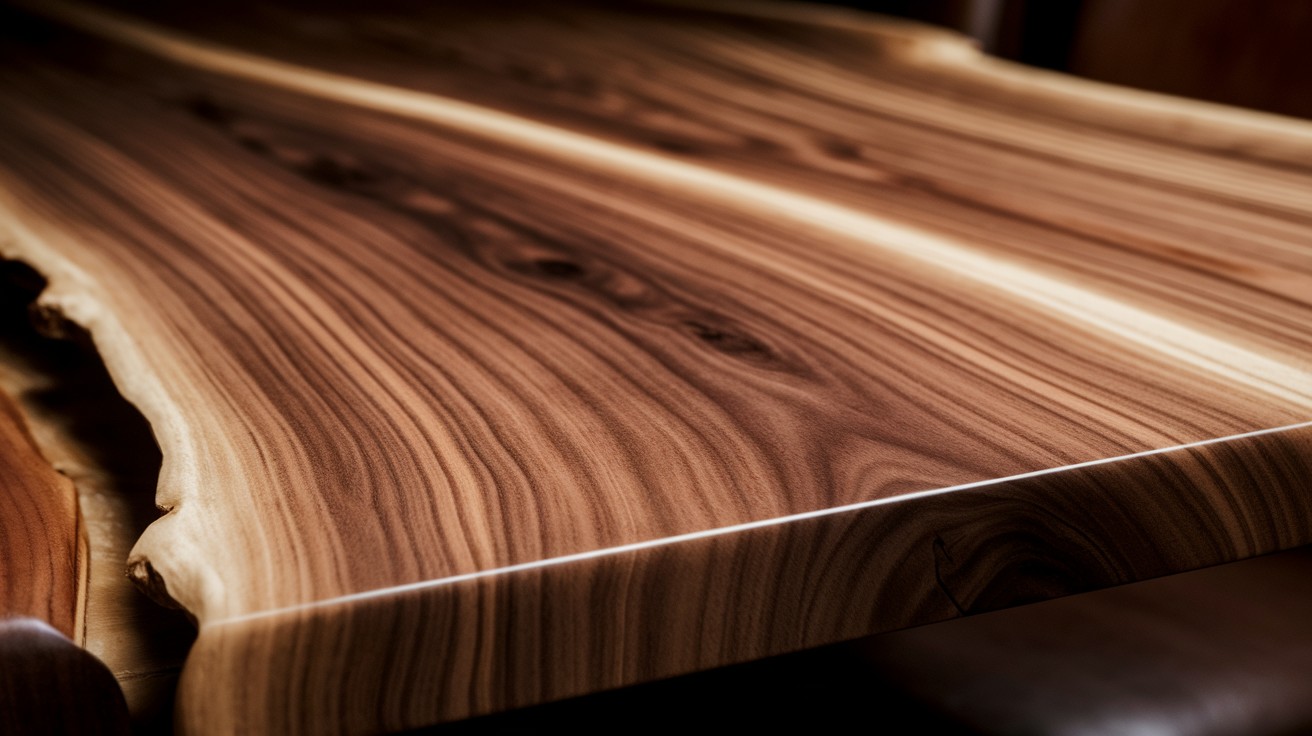
Showcases rich chocolate browns with flowing grain patterns that create visual movement and depth. Adds drama and formality to spaces while creating striking focal points.
8. Mahogany
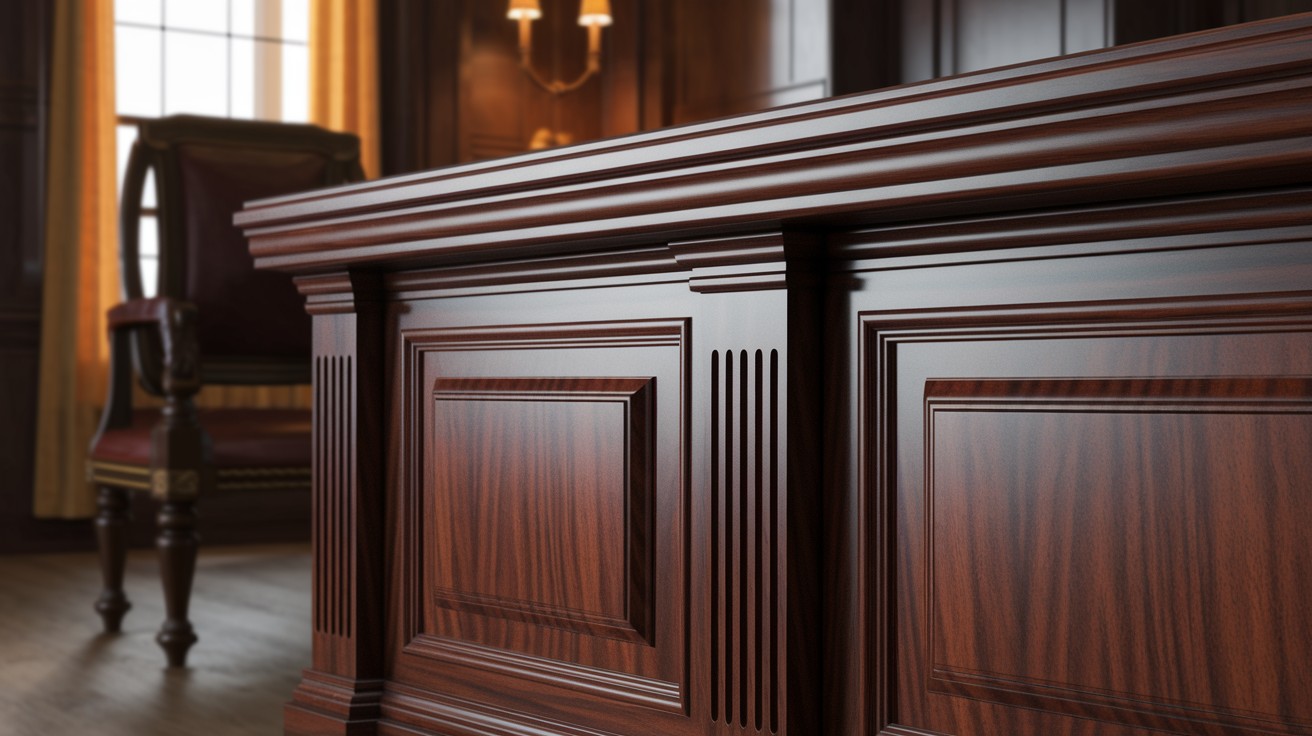
Provides deep reddish-brown coloring with fine, straight grain that has been prized for centuries in high-end furniture making. The ultimate choice for formal, traditional spaces.
9. Birdseye Maple
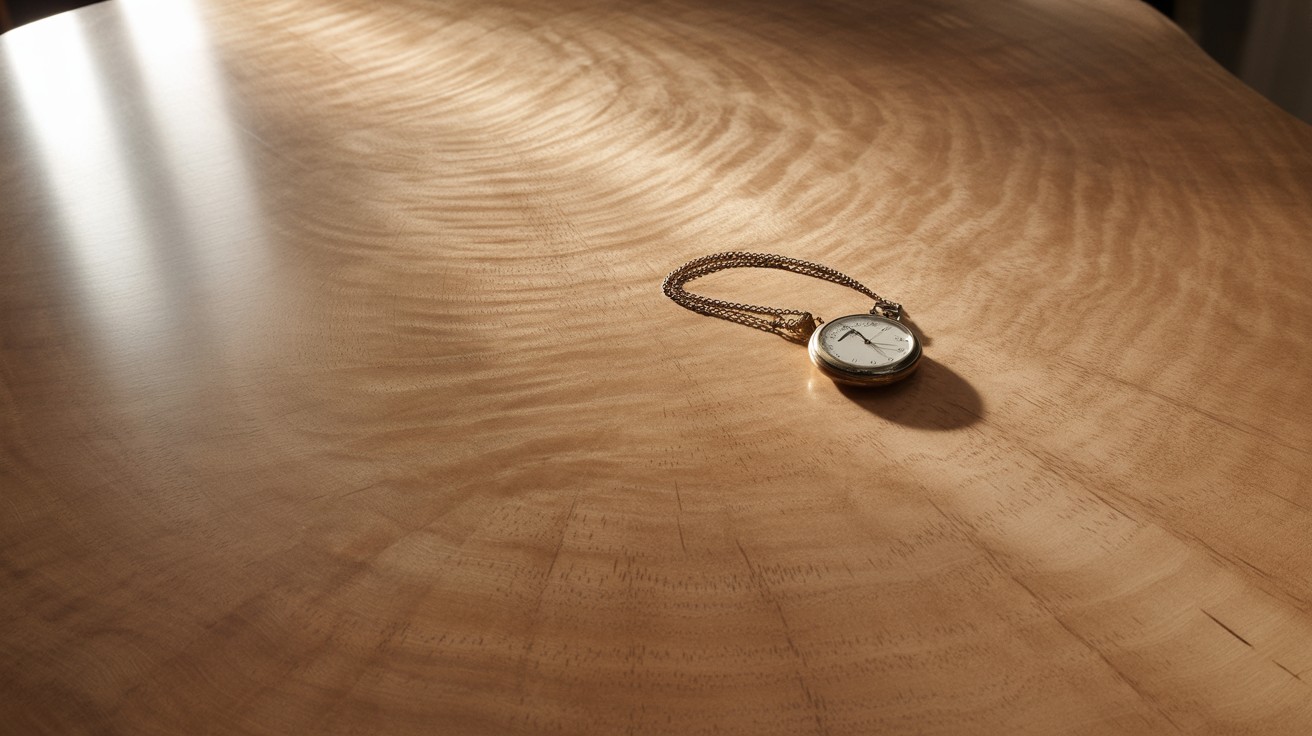
Features unique small, circular patterns that resemble bird’s eyes scattered throughout the wood surface. Creates extraordinary visual interest and conversation pieces.
10. Quarter Sawn Oak
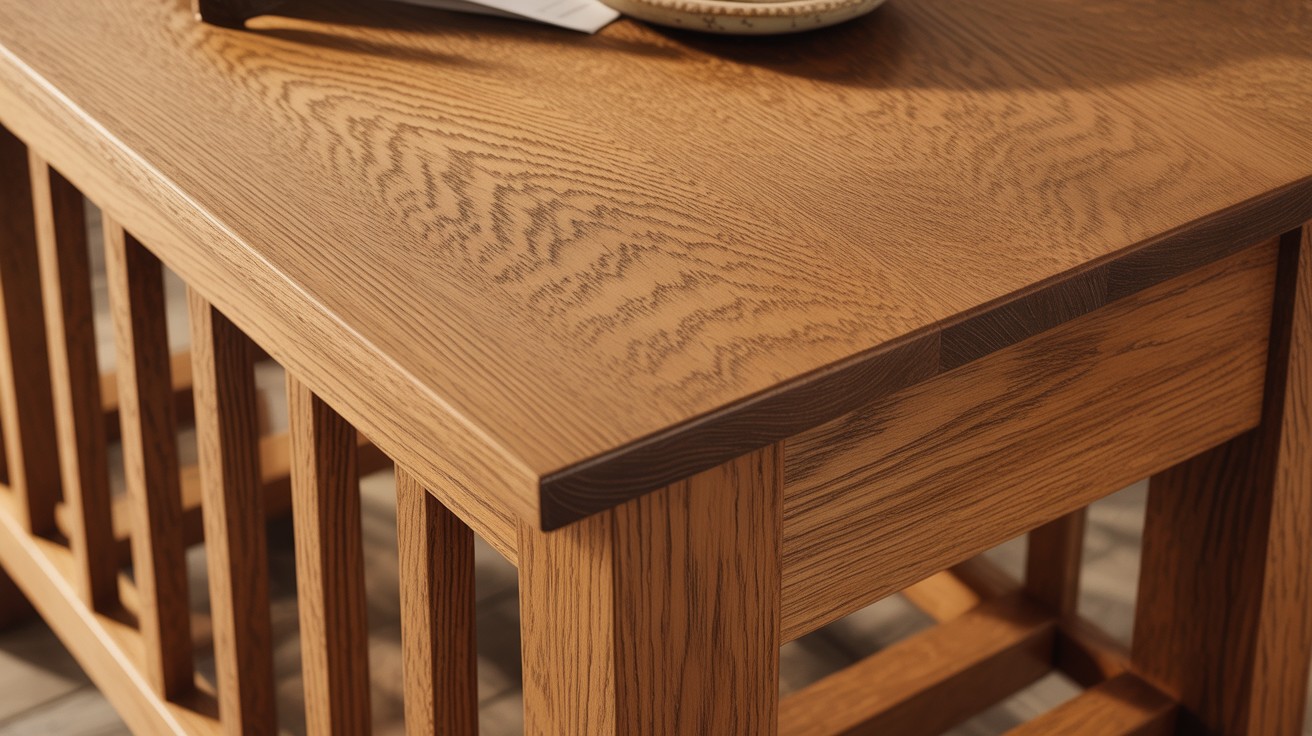
Displays distinctive ray patterns and medullary rays that create beautiful figuring and increased stability compared to plain sawn lumber. Combines beauty with superior structural qualities.
Understanding Undertones
Learn to identify warm and cool undertones in wood and how they affect color perception in different lighting.
Warm vs Cool Undertones
Warm undertones appear in woods that contain yellow, red, or orange hints beneath their surface color.
Cherry wood exemplifies warm undertones with its natural pinkish-red base that deepens over time, while cedar displays honey-colored warmth with golden yellow hints throughout.
These warm-toned woods create cozy, inviting atmospheres and pair well with earth-tone color schemes, brass hardware, and traditional design elements.
Cool undertones manifest in woods that feature gray, blue, or neutral hints in their base coloring.
Ash wood demonstrates cool undertones with its pale, grayish appearance that lacks warm yellow or red elements.
Gray-stained oak also falls into this category, where staining removes natural warmth and creates a more contemporary, neutral appearance.
Cool-toned woods work well in modern spaces, complement silver hardware, and pair beautifully with blue, green, or gray color palettes.
How to Identify Undertones
The most accurate way to identify undertones involves examining wood samples in natural daylight, as artificial lighting can distort color perception significantly.
Hold the wood piece near a window during midday hours when light is most balanced and true to reveal the underlying color characteristics.
Compare your wood sample against pure white or gray paper to make undertones more apparent.
This contrast method helps detect subtle color shifts that might otherwise go unnoticed.
The wood will appear either warmer or cooler when placed against neutral backgrounds, making the undertone identification process much clearer and more reliable.
Wood Grain: Texture That Matters
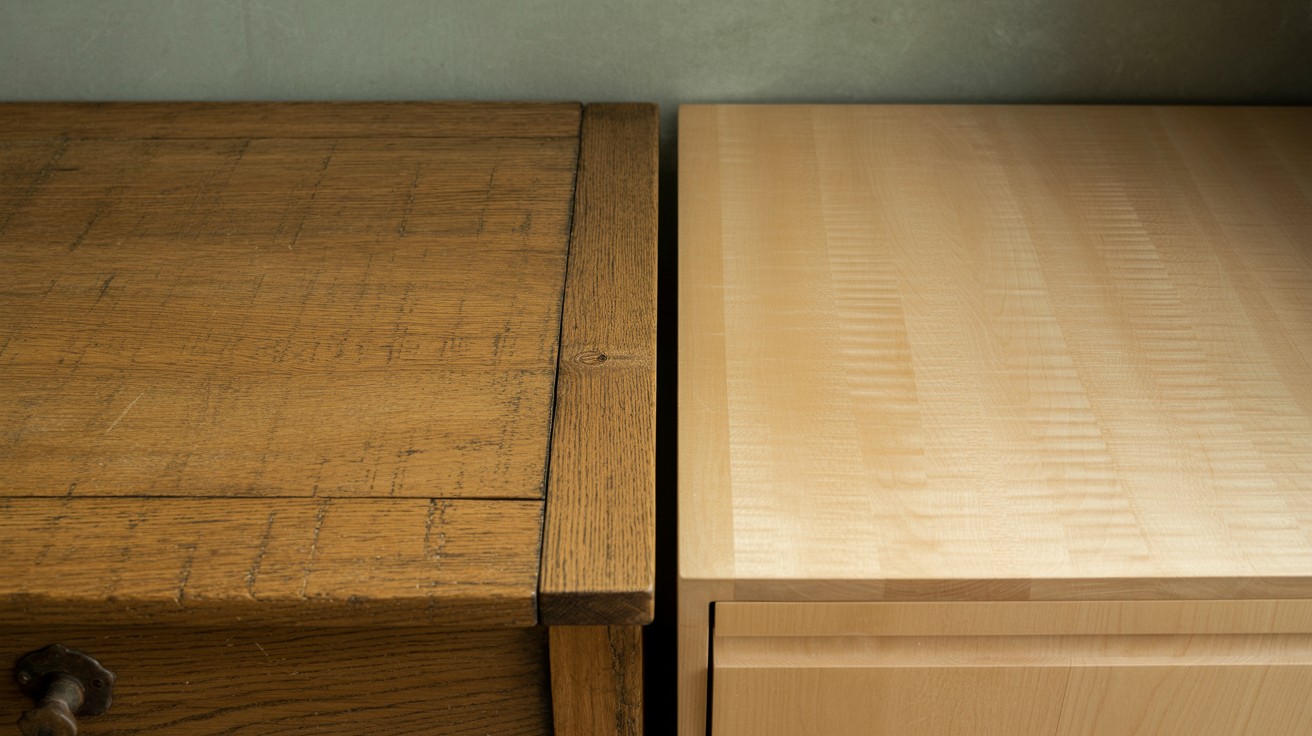
Coarse vs Fine Grains
Coarse grain woods feature pronounced, visible patterns that create texture and visual interest on surfaces.
Oak exemplifies this category with its bold, open grain structure that produces distinct lines and patterns across the wood face.
These pronounced grain patterns contribute to a rustic, casual aesthetic that works well in farmhouse, traditional, or country-style interiors.
The texture catches light differently across the surface, creating depth and movement that adds character to furniture pieces.
Fine grain woods display smooth, subtle patterns with minimal texture variation across their surfaces.
Maple represents this category perfectly, offering tight, even grain that creates a polished, refined appearance.
This smooth texture lends itself to formal, contemporary, or minimalist design styles where clean lines and sophisticated finishes are priorities.
Fine grain woods often accept paint and stain more evenly, making them popular choices for painted furniture or pieces requiring uniform color application.
Matching Grain for Cohesion
Successfully pairing different grain patterns requires balancing visual weight and texture throughout your space.
Use coarse grain pieces as focal points or statement furniture, then complement them with fine grain accessories or smaller pieces that won’t compete for attention.
This approach creates hierarchy while maintaining visual harmony.
Consider the 80-20 rule when mixing grains: choose one dominant grain pattern for 80% of your wood elements, then use contrasting grain as accent pieces for the remaining 20%.
This strategy prevents spaces from feeling chaotic while still allowing for interesting textural variety that keeps rooms visually engaging.
Conclusion
Mastering wood tones doesn’t require perfection-it’s about creating a lived-in, curated look that reflects your personal style and grows over time.
The most beautiful interiors often feature a thoughtful mix of wood species, tones, and grains that tell a story through their variety.
Rather than stressing about finding exact matches, focus on understanding undertones and applying the basic principles of balance and repetition.
Layer different wood elements gradually, allowing your space to develop naturally as you add pieces that speak to you.
The key lies in trusting your instincts while keeping fundamental guidelines in mind.
Wood’s natural beauty shines brightest when it’s allowed to complement other pieces rather than compete with them.
By embracing variety and focusing on harmony rather than uniformity, you’ll create spaces that feel authentic, sophisticated, and genuinely welcoming to family and guests alike.
Frequently Asked Questions
Can I mix different wood species in the same room?
Yes, mixing different wood species creates visual interest and prevents spaces from looking too uniform or sterile. Focus on matching undertones rather than exact colors, and use the rule of three to balance light, medium, and dark tones.
How do I know if a wood has warm or cool undertones?
Examine the wood in natural daylight and compare it against white or gray paper to reveal underlying colors. Warm woods show yellow, red, or orange hints, while cool woods display gray, blue, or neutral undertones.
What’s the difference between natural and stained wood?
Natural wood displays its authentic species color without chemical treatment, showing true characteristics like cherry’s red tones or maple’s cream coloring. Stained wood has been chemically treated to alter or deepen the original color and tone.
How many different wood tones can I use in one space?
Stick to three main wood tones-light, medium, and dark-to maintain balance without overwhelming the space. Each tone should appear at least twice throughout the room to create cohesion and visual rhythm.
Does wood grain pattern matter when mixing different pieces?
Yes, grain patterns affect the overall feel of your space, with coarse grains creating casual, rustic vibes and fine grains appearing more formal. Balance different grain patterns by using one dominant style with contrasting grains as accent pieces.

